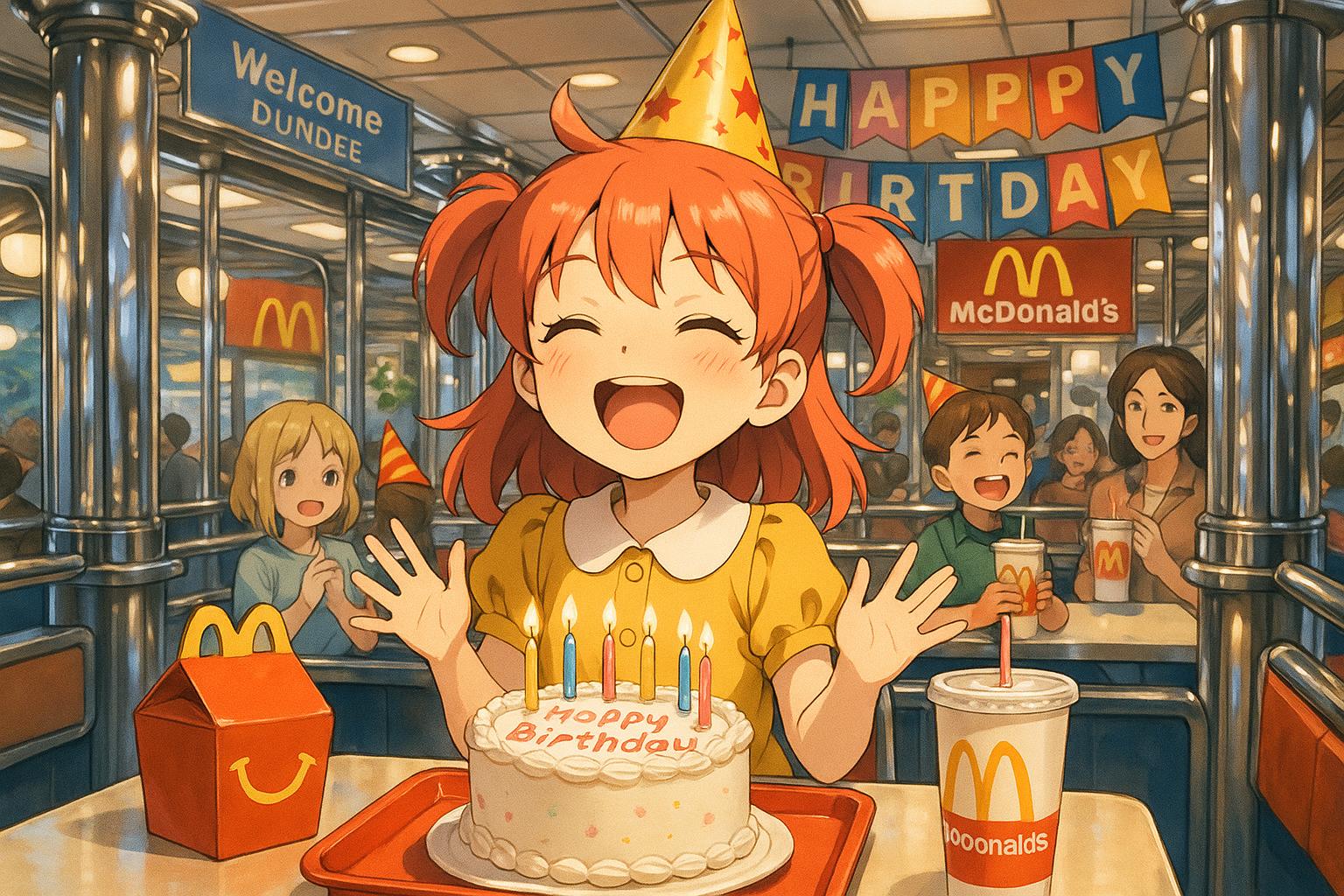It was December 3, 1987, and I found myself at the heart of childhood excitement: Michelle Palmer’s birthday party at Scotland's very first McDonald's, located on Reform Street in Dundee. Invited guests queued with anticipation, lured by the novelty of American fast food. The restaurant, adorned with gleaming stainless steel and chrome, marked a cultural shift in Scottish dining. For a young girl, the paradise of bright decor, enticing aromas, and the promise of colourful meals felt almost surreal. What was a Big Mac? This was not just a restaurant opening; it was an inaugural ceremony of sorts—a gateway to a new culinary adventure.
Since its opening just weeks earlier, the Dundee McDonald's had already left its mark on the city, drawing in curious patrons and eager families, many standing in lines that snaked around the block. Notably, the opening week earned the distinction of being the second busiest in McDonald's UK history at the time, a feat that necessitated additional staffing and supplies to meet the burgeoning demand. This initial frenzy encapsulated a moment in history when American fast-food culture began to permeate throughout Scotland.
Fast forward to recent discussions on Radio X, where Johnny Vaughan reported surprising news: McDonald's is beneficial for certain ailments. While not advocating it as a dietary staple, references to fries and Coke as potential migraine relief resonated with listeners. This juxtaposition of the iconic eatery’s playful fun against a backdrop of health discussions illustrates the complex relationship many have with fast food. Despite frequent criticisms surrounding its health implications—issues ranging from labour practices to public health concerns—McDonald's has continually adapted and found ways to connect with the British public.
Moreover, the nostalgic sentiment surrounding McDonald's extends beyond mere menu items or marketing; it speaks directly to family traditions and shared experiences. For example, the Murray brothers’ mother, Judy, recounted how her sons associated tennis tournaments with celebratory trips to McDonald's, a reward irrespective of winning or losing. It's moments like these that reveal how the restaurant operates as more than a fast-food provider; it acts as a cornerstone of family life for many, rooted deep in communal and personal memory.
The cultural significance of the Dundee branch remains profound after nearly four decades. Today, McDonald's stands tall among several British establishments that have since shuttered their doors. This resilience can, in part, be attributed to savvy menu adaptations that include regional offerings, such as Irn-Bru among sodas, to appease local tastes. These small changes contribute to its sustained popularity, ensuring that families still gather at the Golden Arches for meals, celebrations, or the simple joy of eating out.
Looking back, my own ten-year-old son now mirrors my childhood enthusiasm at the idea of a visit to McDonald's, a fitting testament to its enduring legacy. While markets may shift and consumer habits evolve, the sheer delight that McDonald's brings remains unfaltering. The restaurant continues to evoke that same fervour that it ignited in Dundee all those years ago, making it a staple in the lives of many.
As a cultural touchstone, McDonald's encapsulates American influences while seamlessly integrating into the British social fabric. Perhaps one would not initially consider a fast-food establishment to wield such power; yet, after nearly four decades, it stands as a monument both to a style of dining and the complexities of culinary identity in an ever-evolving society. The smile on my son’s face as he envisions a trip to the Golden Arches is every bit what I experienced as a child—hopes resting on a simple promise of joy wrapped in paper and nostalgia.
Reference Map:
Source: Noah Wire Services
